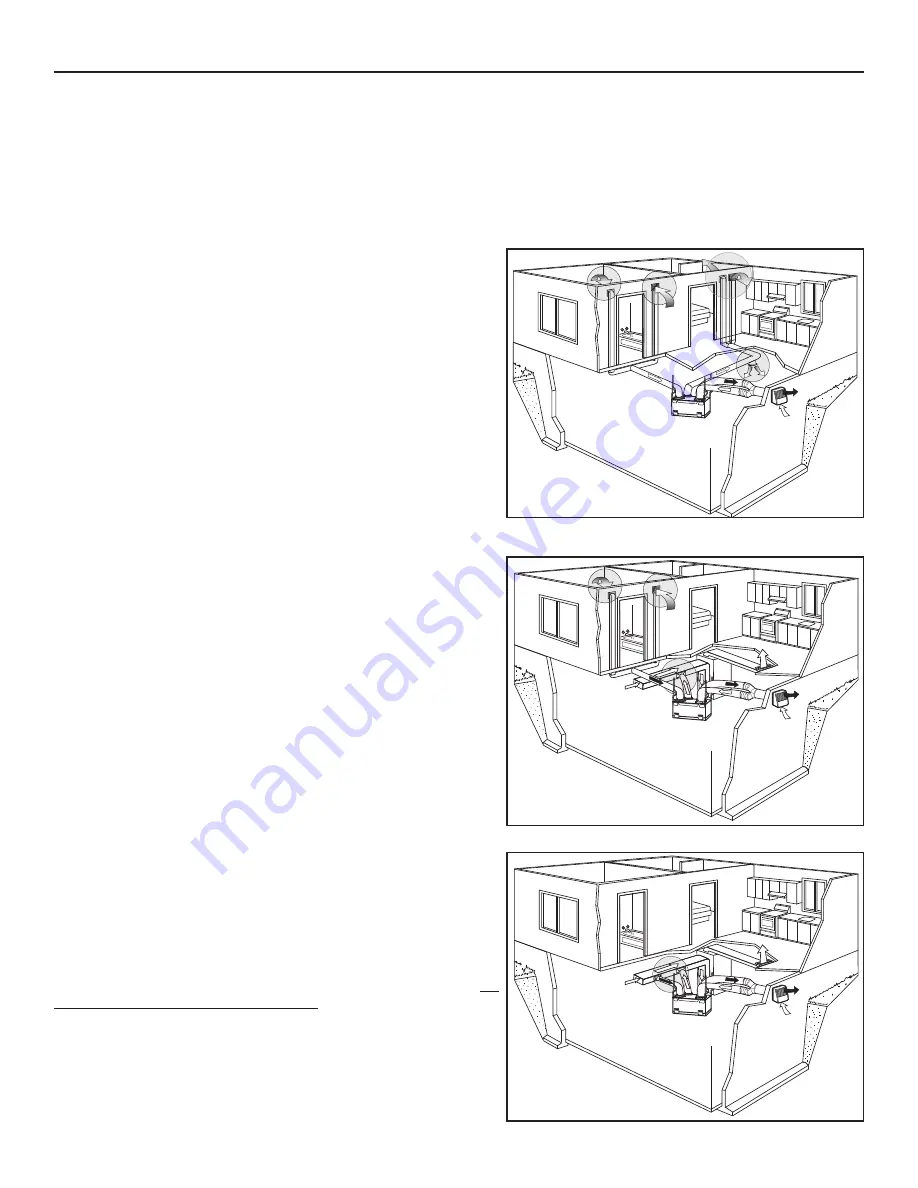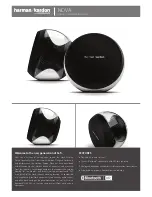
6
2. TYPICAL
INSTALLATIONS
Installations may vary according to the type of unit and the ports configuration (top or sides). Use the following illustrations as guidelines
to help you decide on how the unit will be installed.
All the units should be hung from the joists.
In every case, bathroom fans and a range hood should be used to exhaust stale air. Also, for homes with more than one level, we
recommend one exhaust register at the highest level.
There are 3 installation methods: Fully ducted, Central Draw Point and Simplified Installation.
NOTE: An electrical outlet has to be available within 3 feet of the unit.
2.1 F
ULLY
D
UCTED
S
YSTEM
(P
RIMARILY
FOR
HOMES
WITH
RADIANT
HOT
WATER
OR
ELECTRIC
BASEBOARD
HEATING
)
VH0055
Stale air coming from the registers located at the highest level of the house
is exhausted outdoors. Fresh air from outdoors is filtered and supplied by
the register located in the lowest liveable level.
Homes with more than one level require at least one exhaust register at the
highest level.
See figure at right.
2.2 C
ENTRAL
D
RAW
P
OINT
(C
ONNECTION
TO
A
FORCED
AIR
SYSTEM
)
VH0056
Stale air coming from the registers located at the highest level of the house
is exhausted outdoors. Fresh air from outdoors is filtered and supplied to the
return (plenum) or the supply duct of the forced air unit. See figure at right.
For this type of installation, it is not essential that the forced air system
blower runs when the unit is in operation, but we recommend it.
NOTE: Home with multiple forced air systems should have one unit on each
system.
2.3 S
IMPLIFIED
I
NSTALLATION
(C
ONNECTION
TO
A
FORCED
AIR
SYSTEM
)
VH0057
Stale air is exhausted outdoors. Fresh air from outdoors is filtered and
supplied to the return (plenum) or the supply duct of the forced air unit.
See figure at right.
To avoid cross-contamination and achieve the highest efficiencies, the
forced air system blower must always be ON.
NOTE: Home with multiple forced air systems should have one unit on each
system.







































